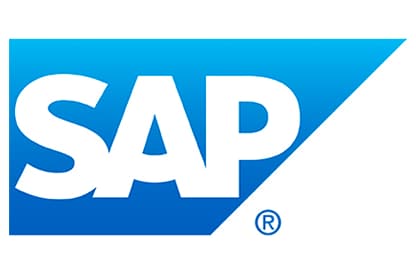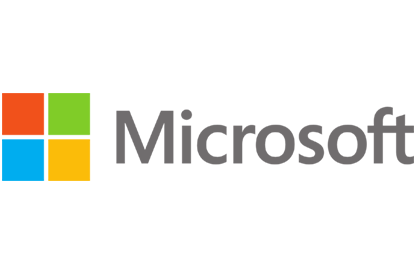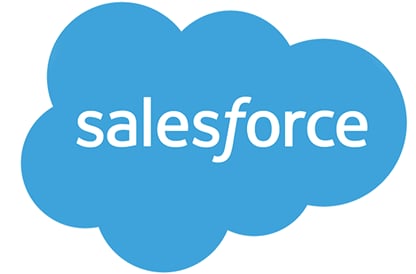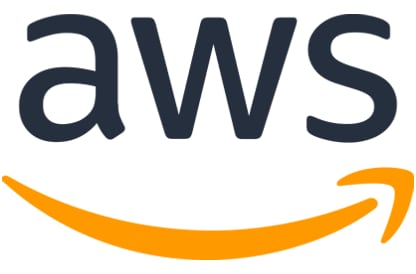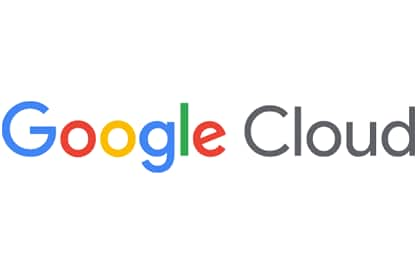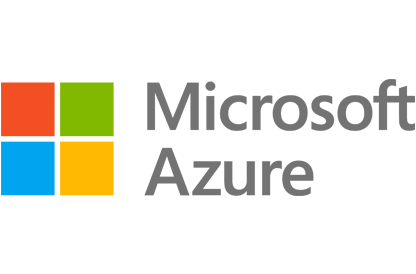Why OpenText
Why OpenText
Overview Why OpenText
OpenText brings decades of expertise to help you unlock data, connect people and processes, and fuel AI with trust
Manage and connect data
Unify data seamlessly across your enterprise to eliminate silos, improve collaboration, and reduce risks
AI-ready information
Get AI-ready and transform your data into structured, accessible, optimized information
Built-in security and compliance
Meet regulatory and compliance requirements and protect your information throughout its lifecycle
Empowering people
Overview Empowering people
OpenText helps people manage content, automate work, use AI, and collaborate to boost productivity
Customers
See how thousands of companies around the world are succeeding with innovative solutions from OpenText
Employees
Our people are our greatest asset; they are the life of the OpenText brand and values
Corporate Responsibility
Learn how we aspire to advance societal goals and accelerate positive change
Partners
Find a highly skilled OpenText partner with the right solution to enable digital transformation
How we compare
Content Management
Service Management
Deploy anywhere
Overview Deployment options
Explore scalable and flexible deployment options for global organizations of any size
Sovereign cloud
Local control. Global scale. Trusted AI
Private cloud
Your cloud, your control
On-premises
Free up resources, optimize performance and rapidly address issues
Public cloud
Run anywhere and scale globally in the public cloud of your choice
AI leadership
Overview Aviator AI
See information in new ways
OpenText™ Aviator AI
AI that understands your business, your data, and your goals
OpenText™ MyAviator
Say hello to faster decisions. Your secure personal AI assistant is ready to get to work
OpenText™ Business Network Aviator
Gain better insights with generative AI for supply chains
OpenText™ Content Aviator
Power work with AI content management and an intelligent AI content assistant
OpenText™ Cybersecurity Aviator
Improve your security posture with AI cybersecurity and agile threat detection
OpenText™ DevOps Aviator
Enable faster app delivery, development, and automated software testing
OpenText™ Experience Aviator
Elevate customer communications and experiences for customer success
OpenText™ Service Management Aviator
Empower users, service agents, and IT staff to find the answers they need
Aviator AI
Overview Aviator AI
See information in new ways
OpenText™ Aviator AI
AI that understands your business, your data, and your goals
OpenText™ MyAviator
Say hello to faster decisions. Your secure personal AI assistant is ready to get to work
OpenText™ Business Network Aviator
Gain better insights with generative AI for supply chains
OpenText™ Content Aviator
Power work with AI content management and an intelligent AI content assistant
OpenText™ Cybersecurity Aviator
Improve your security posture with AI cybersecurity and agile threat detection
OpenText™ DevOps Aviator
Enable faster app delivery, development, and automated software testing
OpenText™ Experience Aviator
Elevate customer communications and experiences for customer success
OpenText™ Service Management Aviator
Empower users, service agents, and IT staff to find the answers they need
Analytics
Overview Analytics
Predict, act, and win with real-time analytics on a smarter data platform
OpenText™ Aviator Search(AI)
Give users access to the answers they need, faster and easier, with multi-repository AI-based search that lets you contextualize everything from clicks to conversations
Business Network
Overview Business Network
Connect once, reach anything with a secure B2B integration platform
Content
Overview Content
Reimagine knowledge with AI-ready content management solutions
OpenText™ Content Aviator(AI)
Supercharge intelligent workspaces with AI to modernize work
Cybersecurity
Overview Cybersecurity
Integrated cybersecurity solutions for enterprise protection
OpenText Cybersecurity for SMBs & MSPs
Purpose built data protection and security solutions
OpenText™ Cybersecurity Aviator(AI)
Reinvent threat hunting to improve security posture with the power of agile AI
DevOps
Overview DevOps
Ship better software—faster—with AI-driven DevOps automation, testing, and quality
Experience
Overview Experience
Reimagine conversations with unforgettable customer experiences
Observability and Service Management
Overview Observability and Service Management
Get the clarity needed to cut the cost and complexity of IT operations
OpenText™ Service Management Aviator(AI)
Redefine Tier 1 business support functions with self-service capabilities from private generative AI
APIs
Overview APIs
Build custom applications using proven OpenText Information Management technology
OpenText™ API Services
Build it your way with OpenText Cloud APIs that create the real-time information flows that enable custom applications and workflows
Device and Data Protection
Overview Device and Data Protection
Protect what matters, recover when it counts
Unified Endpoint Management Tools
- OpenText™ Endpoint Management
- OpenText™ ZENworks Suite
- OpenText™ ZENworks Service Desk
- OpenText™ ZENworks Configuration Management
- OpenText™ ZENworks Endpoint Security Management
- OpenText™ ZENworks Full Disk Encryption
- OpenText™ ZENworks Endpoint Software Patch Management
- OpenText™ ZENworks Asset Management
Solutions
Trusted Data & AI
Overview Trusted Data & AI
Secure information management meets trusted AI
OpenText AI Data Platform
A unified data framework to elevate data and AI trust
OpenText Aviator Studio
A place where you can build, deploy, and iterate on agents in your data's language
OpenText Discovery
A set of tools to help ingest data and automate metadata tagging to fuel AI
OpenText Data Compliance
A suite of services and APIs that make governance proactive and persistent
OpenText Aviator AI Services
Professional services experts who help you on your AI journey
Information Reimagined
Overview Information Reimagined
Get greater visibility and sharper insights from AI-driven information management. Ready to see how?
Knowledge reimagined
Transform daily work with enterprise content management powered by AI
Service Management reimagined
Cut the cost and complexity of IT service management, AIOps, and observability
Connections reimagined
AI-powered B2B integration for supply chain success
Conversations reimagined
Drive value, growth, and loyalty with connected customer experiences
Engineering reimagined
Agile development and software delivery? It only seems impossible
Security reimagined
Cybersecurity for the Enterprise
Decisions reimagined
Unlock insights with AI data analytics
Artificial Intelligence
Overview Aviator AI
See information in new ways
OpenText™ Aviator AI
AI that understands your business, your data, and your goals
OpenText™ MyAviator
Say hello to faster decisions. Your secure personal AI assistant is ready to get to work
OpenText™ Business Network Aviator
Gain better insights with generative AI for supply chains
OpenText™ Content Aviator
Power work with AI content management and an intelligent AI content assistant
OpenText™ Cybersecurity Aviator
Improve your security posture with AI cybersecurity and agile threat detection
OpenText™ DevOps Aviator
Enable faster app delivery, development, and automated software testing
OpenText™ Experience Aviator
Elevate customer communications and experiences for customer success
OpenText™ Service Management Aviator
Empower users, service agents, and IT staff to find the answers they need
Industry
Overview Industry solutions
Improve efficiency, security, and customer satisfaction with OpenText
Energy and resources
Transform energy and resources operations with cloud, cybersecurity, and AI
Financial services
Boost customer experience, compliance, and efficiency with AI
Government
Reimagine your mission with government-secure information management
Healthcare and life sciences
Improve care delivery and patient engagement with AI-powered solutions
Legal
Modernize legal teams with automated, AI-powered legal tech solutions
Manufacturing
Modernize manufacturing operations and logistics to reduce costs and ensure compliance
Retail and consumer goods
Enhance consumer engagement with omnichannel retail solutions and AI
Enterprise Application
Overview Solutions for Enterprise Applications
Run processes faster and with less risk
Services
Services
Overview Services
Achieve digital transformation with guidance from certified experts
Professional Services
Modernize your information management with certified experts
Customer Success Services
Meet business goals with expert guidance, managed services, and more
Support Services
Turn support into your strategic advantage
Managed Services
Free up your internal teams with expert IT service management
Learning Services
Discover training options to help users of all skill levels effectively adopt and use OpenText products
Professional Services
Overview Professional Services
Modernize your information management with certified experts
Customer Success Services
Overview Customer Success Services
Meet business goals with expert guidance, managed services, and more
Support Services
Overview Support Services
Turn support into your strategic advantage
Managed Services
Overview Managed Services
Free up your internal teams with expert IT service management
Learning Services
Overview Learning Services
Discover training options to help users of all skill levels effectively adopt and use OpenText products
Partners
Find a Partner
Overview Find a partner
Information is the heartbeat of every organization. We build information management software so you can build the future
Cloud Partners
Overview Cloud Partners
OpenText partners with leading cloud infrastructure providers to offer the flexibility to run OpenText solutions anywhere
Enterprise Application Partners
Overview Enterprise Application Partners
OpenText partners with top enterprise app providers to unlock unstructured content for better business insights
Partner Solutions
Overview Partner Solutions
Discover flexible and innovative offerings designed to add value to OpenText solutions
Resources for Partners
Overview Resources for Partners
Discover the resources available to support and grow Partner capabilities
Support
Overview Customer Support
Get expert product and service support to accelerate issue resolution and keep business flows running efficiently
Resources
Overview Resources
Explore detailed services and consulting presentations, briefs, documentation and other resources
Choose your region:
Europe, Middle East and Africa
Asia–Pacific
What is ITSM?
IT service management for superior employee experiences and better business outcomes
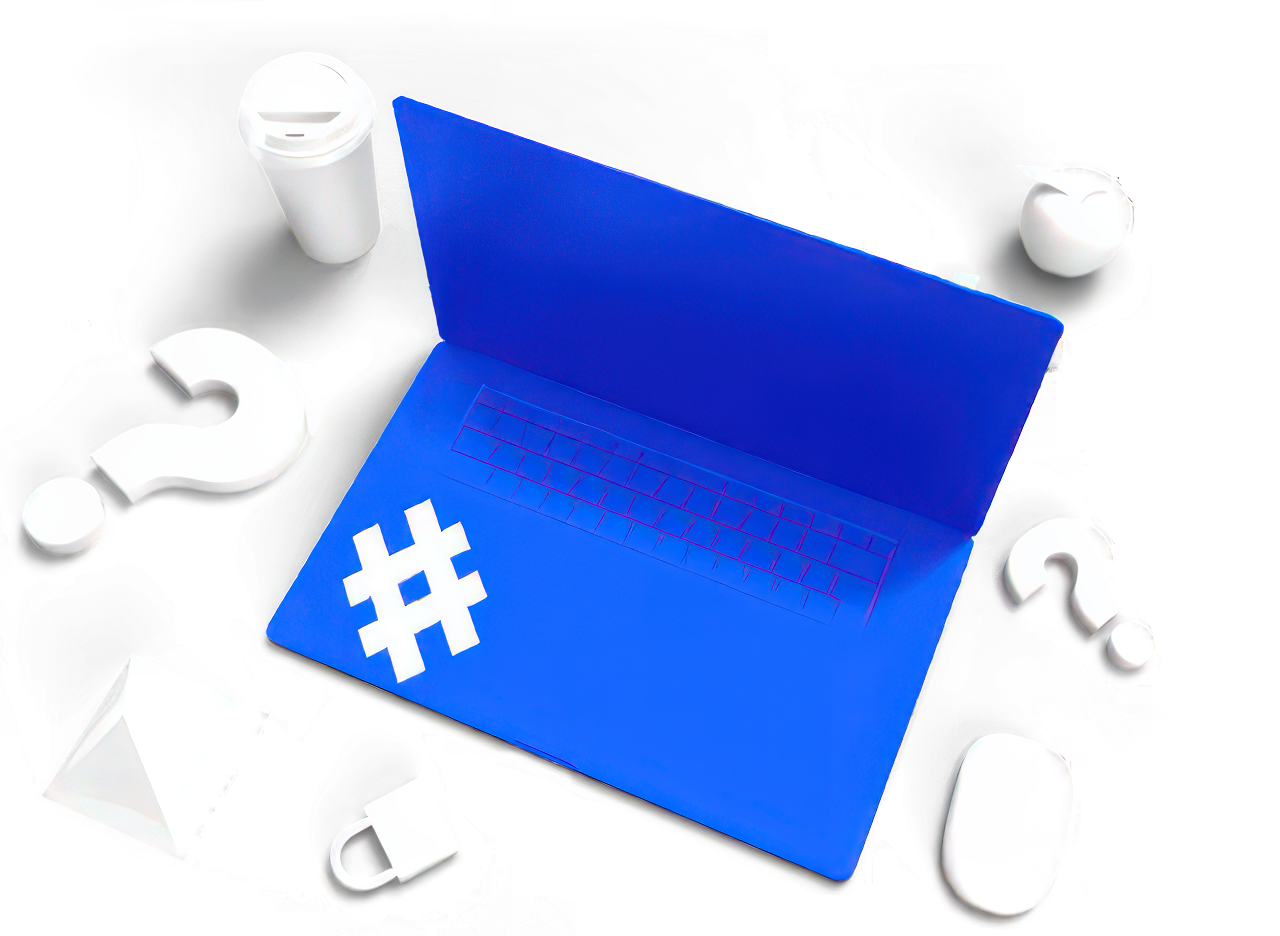
Overview

IT service management (ITSM) focuses on how companies manage and deliver IT services to meet the needs of their employees. It involves a variety of processes, such as incident management (fixing issues), change management (handling changes smoothly), problem management, (identifying and solving the root causes of issues), and service request fulfillment (managing requests for services and support).
ITSM has evolved from a reactive support function to a strategic enabler, delivering better employee experiences and aligning effectively with business goals. By leveraging advanced technologies like AI and automation, ITSM now drives operational excellence, digital transformation, and continuous improvement.
IT Service Management
What are the core IT service management (ITSM) processes?
There are several key processes that help keep everything running smoothly in the world of IT service management. Here are some of the most important ones:
- Service request fulfillment: Handles user requests for services and support, including password resets, software installations, network issues, and hardware problems. This process involves logging, categorizing, and resolving requests efficiently to ensure timely support. Additionally, self-service options are typically available for users to fulfill requests independently.
- Incident management: Focuses on quickly restoring normal service operations after unplanned interruptions.
- Problem management: Aims to identify and address the root causes of incidents to prevent recurrence.
- Change management: Ensures that changes to IT services are introduced in a controlled and systematic manner, with all changes properly documented and approved.
- Knowledge management: Involves creating, sharing, and maintaining knowledge to support decision-making and improve service delivery.
- Service level management: Focuses on defining, agreeing on, and monitoring service levels according to service level agreements (SLAs) to ensure that service performance meets agreed-upon standards.
- IT asset management: Involves managing the lifecycle of IT assets from procurement to disposal, helping organizations get the best value from their assets.
- Release management: Involves planning, scheduling, testing, and controlling software releases to preserve the integrity of the production environment.
Why is ITSM important?
IT service management enables organizations to deliver services and support consistently, efficiently, and cost-effectively. By implementing ITSM, you can resolve issues faster, fulfill services more rapidly, and reduce service outages.
For example, with ITSM, organizations can:
- Achieve faster first-call resolution.
- Deflect call volumes.
- Promote self-service.
- Reduce support costs.
- Improve customer satisfaction scores.
ITSM achieves these benefits through:
- Standardization: Routing, approving, and fulfilling all services through well-defined, repeatable, and reliable processes.
- Self-service: Empowering users to resolve requests on their own, reducing the burden on support teams.
- Increased governance: Providing oversight of IT operations, including structured change management, adherence to service level agreements (SLAs), transparency and accountability through documentation, and compliance with regulatory and organizational policies.
- AI and automation: Supporting users, agents, and IT staff in finding answers, improving processes, and preventing downtime.
What’s the role of AI in ITSM?
IT service management software typically leverages both predictive and generative AI to enhance service delivery.
Predictive AI uses statistical analysis and machine learning to forecast outcomes based on existing data. In ITSM, there are several practical applications of predictive AI. For example, AI can automatically detect involved configuration items (CIs) based on the incident description. Another example is change analytics, where AI predicts the success rate of changes and offers suggestions for improvement. Additionally, AI can analyze patterns across incidents to pinpoint problem areas for further investigation.
Generative AI, on the other hand, creates new data or content based on learned patterns. A generative AI virtual agent, capable of understanding user intent and conversing in natural language, can assist users with their service and support requests, answering questions and guiding them through available offerings. Service agents can also interact with these virtual agents to resolve tickets more efficiently by asking them to summarize issues and suggest solutions.
Generative AI extends beyond virtual agents. AI-enriched workflows can be configured to influence or drive the next steps in automation processes. This combination of generative AI and automation is commonly referred to as agentic AI. Agentic AI pairs generative AI with automation to accelerate request fulfillment or solve problems without human intervention. For example, AI can detect changes in user sentiment and trigger workflow actions, such as escalating a ticket or reassigning it to a different support team.
A generative AI virtual agent empowers employee self-service and boosts agent productivity by answering questions, summarizing cases, and suggesting solutions.
Take a tour of GenAI in action for ITSMWhat is the difference between ITSM and ITIL?
ITIL, which stands for Information Technology Infrastructure Library, is a framework that provides best practices for ITSM, while ITSM is the broader discipline of managing and delivering IT services.
Developed by the UK government in the 1980s in response to the rapid growth of information technology, the ITIL framework provides practical guidance for ITSM through a formalized structure of predefined standards and methodologies. It also emphasizes the continual improvement of services that are offered, delivered, and supported. In essence, the ITIL framework helps organizations define their ITSM strategy and effectively implement it.
Simply put, ITSM is the what and ITIL is the how of service delivery. For example, in incident management, ITSM requires IT teams to address and resolve incidents to maintain service quality. ITIL provides detailed guidance on handling these incidents, including categorization by nature and impact, determining when and how to escalate, and outlining resolution steps.
Are ITSM and ESM the same thing?
Enterprise service management (ESM) is an evolution of ITSM, born from the idea that a service is a service whether it’s for IT or not. It applies the best practices of IT service management—such as service catalogs, streamlined workflows, and self-service support—to non-IT functions like HR, facilities, finance, and sales, even connecting external users with internal support staff.
Whether a service pertains to IT or non-IT, the goal remains the same: to provide efficient, reliable, and user-centric support. Managing services means handling a wide range of requests across departments.
For example, the employee onboarding process requires collaboration between HR, IT, and Facilities to ensure a smooth transition for new hires. The support staff in these departments can leverage a common service management software platform to standardize, automate, and integrate processes, delivering seamless service experiences for new hires. Once HR initiates the onboarding process, automated workflows can provision a new laptop and set up account access, tasks typically handled by IT. Meanwhile, Facilities can be notified to start the process for badge access and office setup.
What is ITSM software, and what should you look for when choosing it?
IT service management software automates the entire lifecycle of IT services, from opening and tracking to prioritizing, approving, and fulfilling requests. It ensures streamlined and efficient processes.
Consider these questions to help you choose the best ITSM software for your organization:
- User-friendly: Can employees easily find what they need and get the right level of support, whether through self-service or by connecting with the right support team from the start?
- Easy to maintain and upgrade: Can service teams quickly create service applications without relying on developers? How quickly can you adopt the latest release to take advantage of new software features?
- Support beyond IT: Does the ITSM software allow you to easily extend service management to non-IT business functions, supporting a single service portal and catalog?
- Seamless integrations: Does the ITSM software easily connect with both native and third-party applications, such as collaboration solutions like Microsoft Teams or Slack to support seamless, connected service experiences?
- Complete service visibility: Does the ITSM tool provide service context with involved CIs and their dependencies to help you assess service impact?
- AI capabilities: Can you harness the power of predictive and generative AI without worrying about complex, expensive add-ons? Does the generative AI service use a private large language model (LLM,) or will your data be shared with a public LLM?
- Lower TCO: In addition to the cost of maintenance and upgrades, how will adding new users or capabilities as business needs change affect your bottom line?
A generative AI virtual agent empowers employee self-service and boosts agent productivity by answering questions, summarizing cases, and suggesting solutions.
Read the OpenText Service Management product overviewWhat’s the best way to align ITSM to business goals and drive business value?
To implement successful ITSM and support business goals, organizations should:
- Refine and optimize key ITSM practices. Adopt an ITIL framework and focus on practices that deliver the greatest value in operational efficiencies before expanding to others.
- Automate continuously. As IT ecosystems become increasingly complex, automation is essential to tackle digitalization challenges, enabling you to do more with less.
- Evolve ITSM into enterprise service management. Start with departments, such as HR and Facilities, that will drive the greatest value from case automation and support company-wide digital transformation goals.
- Understand your TCO to select a cost model that best suits your organization. Consider all costs, including infrastructure, licensing, implementation, and maintenances, but also potential savings from operational efficiencies.
- Monitor and improve processes continuously. Define goals and metrics that best measure service performance and identify areas for improvement.
- Build a robust knowledge management system. Capture both tacit and explicit knowledge to support automation for AI and self-service.
- Train your staff. Ensure they receive the right training, such as AI, to adapt to evolving technologies and the cultural changes that come with these technologies.
What’s the role of discovery in ITSM?
The term discovery often comes up alongside CMDB (configuration management database) due to their close relationship. Discovery identifies and catalogs IT assets of all kinds, while the CMDB stores this information. By feeding data into the CMDB, discovery ensures the data is accurate and up to date.
ITSM uses discovered information to:
- Provide context to incidents.
- Predict the impact of changes.
- Set targets for event monitoring.
- Communicate service outages to the right teams.
- Provide evidence of compliance.
As services become increasingly complex and move to the cloud, organizations need to enhance their discovery processes to increase IT visibility, minimize service disruptions, and ensure successful changes.
The right discovery tool should discover everything—clouds, networks, storage, software, and dependencies—regardless of how they’re hosted. It should also require minimal changes to configurations, capture dependencies, and allow for easy updates and validations.
Resources
Related products
OpenText™ Service Management
Elevate user experiences with generative AI and self-service options
